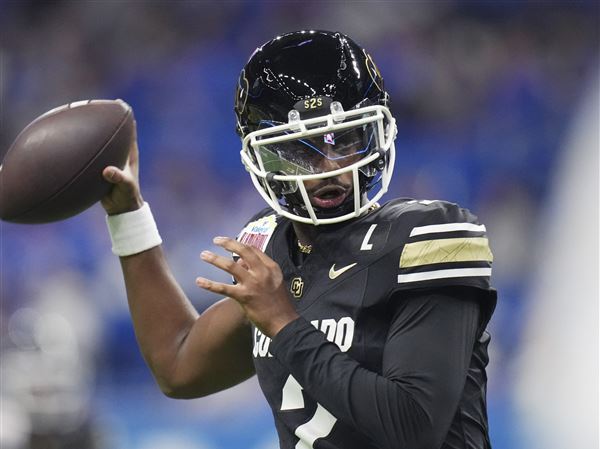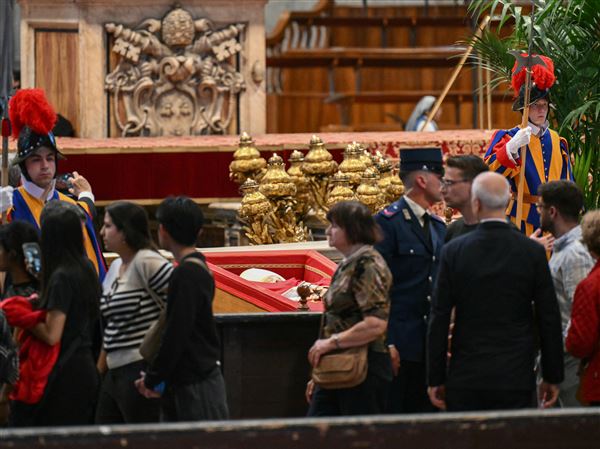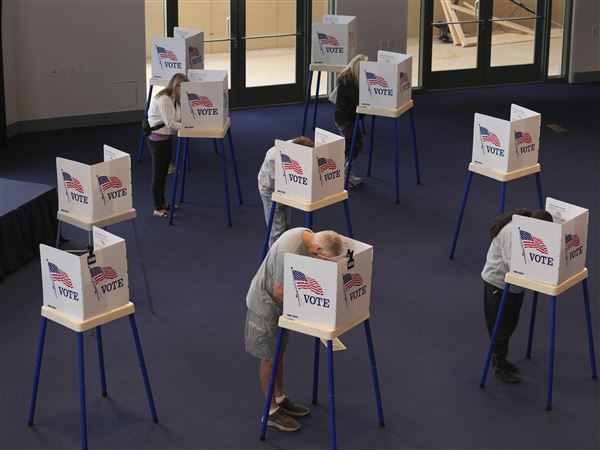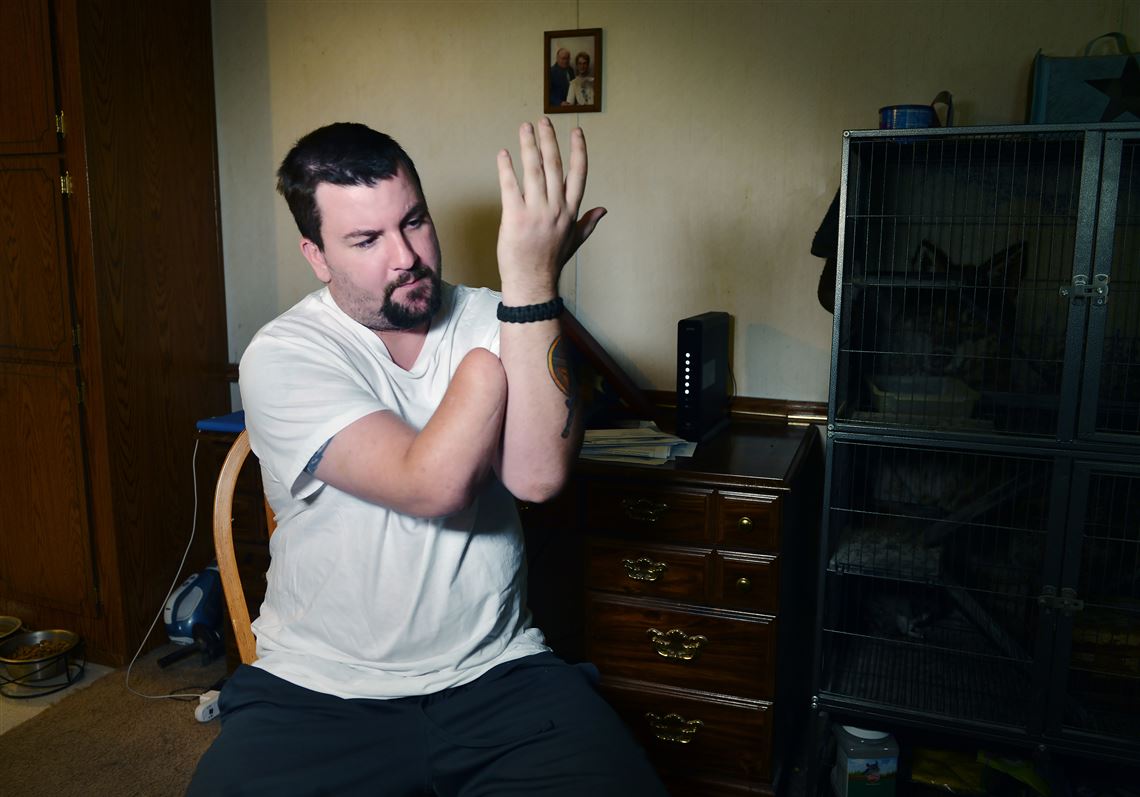Jeff Kepner had a lot of hope when he agreed to be the world’s first double hand transplant patient in 2009.
After the arduous 9-hour surgery on May 4, 2009 at UPMC Montefiore Hospital, he looked forward to the day when he could take a shower without help, hold his grandchildren in his arms and hold his wife’s hand and feel it again.
But as time wore on and his progress plateaued over the next few years, his hopes were dashed. He gave up the physical therapy and slowly watched as what motion he had gained in the new hands slowed, and eventually atrophied.
“Now, the hands, they don’t work. I just sit here all day and watch TV,” he said in a phone interview from his home in Augusta, Ga.
Mr. Kepner, 64, first told his story this past summer to Time magazine, thrusting him back into the spotlight. Seven years ago he was a symbol of hope for people who have lost limbs. Now he’s in the spotlight for a different reason.
“I asked [UPMC] to remove my hands, but now they say they can’t because of how my surgery went,” he said.
Mr. Kepner’s case stands as an example of the peril the early patients of any new medical procedure risk when they agree to do something no one — or few people — have ever undergone.
“Surgeons do everything in their control to secure the most favorable outcomes for patients,” W. P. Andrew Lee, the doctor who oversaw the team that performed Mr. Kepner’s surgery at UPMC in 2009 said in an emailed statement from Johns Hopkins Hospital in Baltimore, where he now works. “But as you might expect, new procedures sometimes yield lessons that allow us to glean knowledge and information that we use to benefit future patients.”
Mr. Kepner is not alone.
Two of the other four patients who received transplants at UPMC by Dr. Lee’s team in 2009 and 2010 also have had their hands removed.
A review published last year in the Plastic and Reconstructive Surgery journal by Dr. Lee and two of his colleagues looked at all of the world’s known hand and upper extremity (below the shoulder) transplants between 1998 and 2014.
It found that there have been transplants in 15 countries, with 72 patients receiving a total of 107 limbs. A total of 24 limbs were lost some time after transplant, according to the article, for a 78 percent survival rate.
Twenty-two of those patients and 32 of those limbs were transplanted in the United States, with a loss of seven of them, according to the study, for about the same percentage of lost limbs as the international view.
That may sound high, but it reflects the risk of early surgical procedures, said L. Scott Levin, chairman of the department of orthopaedic surgery at Penn Medicine in Philadelphia and director of the hand transplantation program at Children’s Hospital of Philadelphia.
Though three of the five Pittsburgh patients have not had good outcomes, “You can’t go just by the Pittsburgh experience,” he said, because Dr. Lee and his team were “pioneers” in the field.
“I think hand transplantation is here to stay,” Dr. Levin said.
An evolving field
Dr. Lee points to the outcomes of the other three cases of double hand transplants — including one more at Hopkins in 2012 — that his team has done, as evidence that the field is evolving, including the case of Chris Pollock.
Mr. Pollock, 47, of Harrisburg, lost both of his hands in a farming accident in 2008, and was the third UPMC patient, second double hand transplant patient, and first full forearm transplant patient, when he had an 11-hour surgery on Feb. 5, 2010.
He now is beginning the process of returning to work and has substantial use of his hands, allowing him to write and drive; he recently went kayaking.
When he meets people who saw him in the first year or so after surgery, “The first thing they’d say to me is, ‘This is a miracle. It’s amazing that this is working,’ ” Mr. Pollock said.
Though the field is young, the success rate over time of hand transplants “is actually mimicking the progress of solid organ transplant” in its early years, when it had other hurdles to overcome to make it a more common procedure, said Dr. Levin, who chairs the national committee addressing issues in the field.
The first transplant that Pittsburgh’s famous kidney and liver surgeon Tom Starzl did was not paid for by insurance, Dr. Levin said, just as hand transplants are not yet paid for by insurance. “There were challenges. And the medical and surgical community worked through them, and we’re doing the same thing now.”
Dr. Levin and others say there are discussions ongoing with insurers both, private and government, to provide coverage for hand transplants, but neither provides it. Highmark, UPMC, Aetna and Cigna all say they continue to watch the field, but they all still consider it “experimental,” though that could change with more cases, they all said.
Just as Dr. Starzl did, “each hand transplant team has shared knowledge of what worked and what hasn’t.”
Simon Talbot, director of the upper extremity transplant program at Brigham and Women’s Hospital in Boston, which has done three hand transplant surgeries, said his team learns with each case.
“What have we learned and where is this headed? We talk with patients about this all the time,” he said. “We have to fall back on the fact that the surgery is complicated and there are a lot of unknowns. We have to research as we go.”
Part of the research is trying to gauge what kind of support a patient will have after surgery, and whether there will be good compliance with taking medications and doing physical therapy — factors that have proven to be important for positive outcomes, he said.
Last year Dr. Levin led the team that performed the first double hand transplantation on a child, an 8-year-old boy who had lost both hands to an infection. His team has also done two other bilateral transplants on adults.
He said surgeons in the field have all learned that skin, in particular, has been difficult to get to transplant well because it is so susceptible to rejection issues.
Unlike with solid organ transplant, where the main post-operative job of the patient is to stay healthy and take their medication, hand transplant patients have a difficult task of doing regular rehabilitation.
“If the patient does not engage in therapy, their outcomes are going to be poor,” he said.
One character trait transplant units have learned to look for is to find out what their motivation is for having a transplant.
“If this is driven and motivated by family members or spouses, it won’t work,” Dr. Levin said. “We know that now.”
Several of those issues played out with the Pittsburgh patients.
‘Mostly my fault’
Josh Maloney of New Alexandria, a former Marine who was the first hand transplant patient at UPMC when he had a right hand attached on March 14, 2009, had his new hand removed four years ago. He had experienced rejection issues and he had trouble adhering to the therapy regimen.
“It was mostly my fault,” he said. “I did 18 months of therapy and I thought, ‘I’m good to go.’ And I thought once I reached that level I didn’t have to maintain it.”
Jessica Arrigo Doak, 33, a New Jersey woman who had her right hand transplanted at UPMC on Sept. 11, 2010, had her hand removed last year after experiencing function and rejection issues.
She, too, had hopes of regaining normal use of the transplanted hand.
“But the expectations versus the reality didn’t really match up,” she said in a phone interview.
When they were patients back in 2009 and 2010, respectively, Mr. Kepner and Ms. Arrigo Doak both noted that part of their motivation was from family members — Mr. Kepner’s wife and Ms. Arrigo Doak’s then-fiance encouraged them to pursue the transplants.
In contrast, Mr. Pollock credits his own dedication to therapy and a strong support system to his continual improvement in the function of his new hands — something Dr. Lee also took note of.
“Mr. Pollock’s dedication and diligence, as well as close communication with his care team, have been important factors in his excellent outcome,” Dr. Lee wrote in an email.
As for Mr. Kepner, UPMC, which is still consulting with him, believes he could still help himself make better use of his transplanted hands.
“We have suggested several options for Mr. Kepner, including the use of assist devices or splints that could be worn over the transplants to improve basic functionality. We also believe that additional, minor surgical procedures — and commitment to more physical therapy — could improve the function of his hands,” Vijay Gorantla, administrative director of UPMC’s Reconstructive Transplant Program, said in emailed response to questions.
But Mr. Kepner says he is tired of surgeries and he believes he knows the kind of surgery they are referring to — cleaning out the scar tissue in his hands — and it did not help much before, either.
He gets some use out of his right hand by wearing a splint on it that creates a hook. That allows him to use his otherwise immobile hand to at least push down and pull up his shorts when he uses the bathroom, push buttons on a phone and operate the TV remote control.
“The only time I get really, really frustrated is when I can’t do something; when I see a simple thing that needs to be fixed, a vacuum or a light bulb or something,” he said. “Everything has to be done by my wife or daughter. I can watch TV or talk on the phone, but that gets old fast.”
His case was complicated by a decision made by doctors mid-surgery, he said, to take off several more inches of his right arm to make the transplant work. Losing those extra inches makes removing the transplants and going back to prosthetics difficult if not impossible, he said UPMC told him. UPMC said there were no complications during his surgery.
But Mr. Kepner said it leaves him with the only option he believes he has: “To keep these hands; it’s better than having nothing there.”
Looking back at his decision to pursue surgery in 2009, he said: “If they had told me [he might not be able to go back to prosthetics] I’m not sure I would have done it.”
Sean D. Hamill: shamill@post-gazette.com or 412-263-2579 or Twitter: @SeanDHamill
First Published: October 2, 2016, 4:00 a.m.















